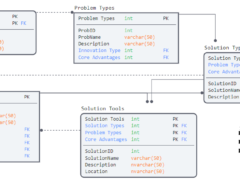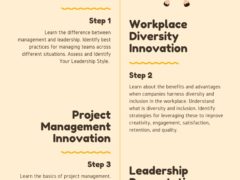Evaluating a new project opportunity requires understanding the project, requirements, and the environment in which the project is being delivered. Beginning with the bid process the project manager should begin conducting a literature review and risk assessment of:
The 5 Step RFP Review Process Model
The five step RFP process review model below was used to evaluate a Ministry of Health RFP. Extensive information about the MOH project can be found below:
Ministry of Health. (2015). ENABLING EFFECTIVE, QUALITY POPULATION AND PATIENT-CENTRED CARE: A PROVINCIAL STRATEGY FOR HEALTH INFORMATION MANAGEMENT AND TECHNOLOGY. Retrieved from http://www.health.gov.bc.ca/library/publications/year/2015/IMIT-policy-paper.pdf
Step 1: Evaluate Project Progress to Date
The following spreadsheet provides one example of how project updates can be mapped. Each item in column-one represents a goal and deliverable for the MOH project. Column-One identifies level 1 deliverables and column-two provides level 2 deliverables (that represent a high level work breakdown structure). The literature review provided insights. The project status was updated to indicate if the deliverable was in progress. It also showed at what stage it was.
For simplicity the 5 project management process groups, which represent the development life-cycle of the project, were used. Because these groups are overlapping, and not discrete, mapping each deliverable across the life-cycle requires a bit of guesswork. We map the actual progress of each deliverable against the project schedules. This is the 6th step immediately upon receiving approval for the bid.
Step 2: Identify Metrics & Goals for Evaluating Project Performance
The template below mapped the level 1 and level 2 metrics. It also mapped the impact goals identified in the literature. Understanding these goals is crucial towards evaluating the project schedule, requirements and work breakdown schedule, budget, and scope.
Step 3: Identify Data Collection Risks
The following spreadsheet was used to collect and report on information in the MOH report about data collection. Because the MOH project includes building out a data collection framework (and standards) there was a lot of information available. When submitting bids, the project manager can evaluate the project environment’s capacity. They can also assess engagement and commitment to delivering and evaluating the project goals.
Step 4: Identify Project Management Risks
The following template was used to document and report on project management risks identified in the MOH report. The first five risks were significant challenges for the entire system. They needed to be addressed by the project management office, IMIT’s committees, and Health Authority representatives.
Step 5: Evaluate Overall Project Viability
With the above information the project manager can evaluate the Ministry of Health’s RFP’s viability. In this case the RFP was for 3-years with the possibility of three 1-year extensions. The hours per week still needed to be confirmed. The language in the RFP was incomplete. However, other references indicated a full-time commitment was usually required. This was not always the case.
As this was an extension on a previous contract the project manager needed to evaluate progress to date. The available MOH publication reported on some progress. However, there were indications that the project was behind on schedule. This delay was possibly due to the noted risks and barriers. Due to the scope of the MOH contract further exploration would be needed if the bid is approved.
Additional Considerations – Project Fit
Another consideration is whether the project requirements and technical specifications are a match for the team. Role requirements and job descriptions vary depending on the project and the context. The pure project management role is rarely encountered in technology-based industries where hands-on experience as a technician is preferred. It is important to carefully consider whether the requirements need a technician or a project manager. The skill set and tools are often considerably different.
Many projects RFP’s implicitly call for someone who can fulfill the task requirements of a hybrid role. Although some of these may indicate project manager/business analyst many of these can be identified under the following names:
- Software Project Manager
- IT Project Manager
- Technical Project Manager, etc.
The key is to read the statement of work (SoW) carefully. This helps determine what skills are needed. These skills can often infer what resources will be available to the role. Many RFP’s for these hybrid roles exist for the very reason that the skills are not readily available internally. The assumption often made is that hands-on expertise in a given area is sufficient. This is often considered prior to taking on project manager roles. However, it will not overcome the absence of other foundational components. The environment and resources available should be discussed openly during the RFP bid. This is necessary to avoid accepting a poorly designed statement of work.
It is crucial that the team and project resources are evaluated early on to insure that delivery is feasible. Not all projects are scoped adequately which emphasizes the importance of evaluating the RFP before bidding. Being approached to bid on a project does not necessarily show it is a good fit. The frequency of a positive match being rejected between the project requirements and the contractor/project manager’s background should also not be underestimated. The political context is beyond the scope of this article but remains an important vector influencing the contract environment.
Concluding Remarks
Additional questions and concerns relevant to each project’s industry also need to be identified. This includes the size of the team, reporting relationships, scope of authority, and location of the job site. With the MOH RFP the required site of work was in Victoria. Further language also clarified the candidate needed to have 5+ years of Canadian work experience. These details proved central to the current incumbent receiving an extension on their existing contract.
How is your project management office evaluating RFP’s? Share your insights below.
Travis Barker, MPA GCPM
Innovate Vancouver
Innovate Vancouver is a Technology and Business Innovation Consulting Service located in Vancouver, BC. Contact Innovate Vancouver to help with your new project. Innovate Vancouver also gives back to the community through business consulting services. Contact us for more details.













